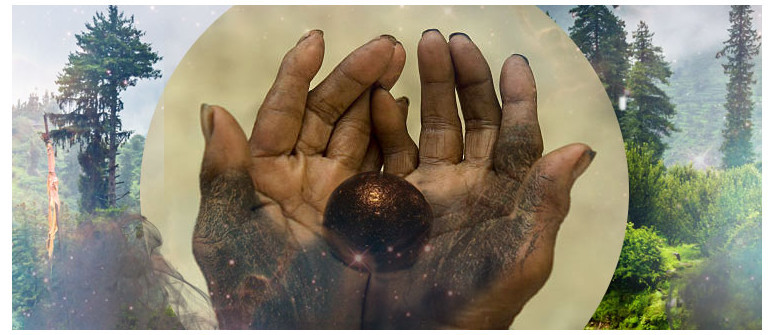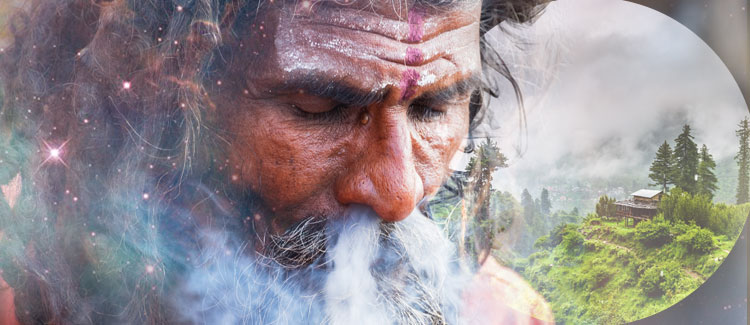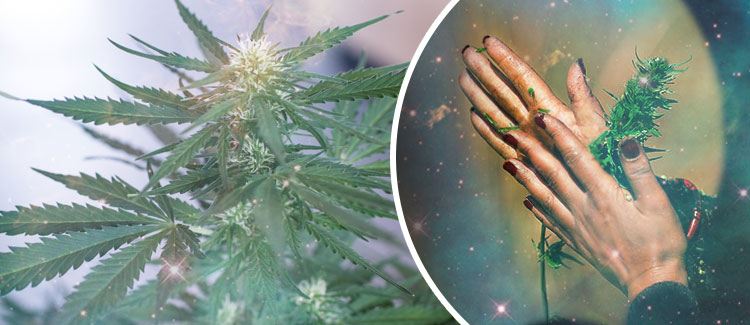What is charas? A brief history and how to make it yourself

You've very likely heard of Shatter and BHO, two of the most famous cannabis concentrates on the market, but what about charas, the oldest extract in history?
Cannabis concentrates might for some people seem like a relatively new consumption method, but the truth is, they've been around and referenced for centuries. One the oldest kinds of extract known to humankind—which is still very much treasured today is charas. Charas is almost identical to hashish, except it's made in a different way.
Highly sacred in India for modern and religious practices, and famous in surrounding countries as well, charas usually boasts a high THC content, a delicious taste, and powerful effects. But there's far more to charas than that. If you want to get your hands sticky and learn the history of charas, how it's used, and even how charas is made, here's a more in-depth look at the "black gold" of the Himalayas.
SO WHAT IS CHARAS EXACTLY?
While charas and other forms of hashish have a lot in common, Charas is unique in its own right. The process of making charas is the same as any extract in that it involves separating the trichomes—those sticky, frosty layers that you'll find sparkling on cannabis flowers—from the cannabis plant material. However, charas uses a very specific method as it is only made from live bud, whereas other forms of hashish use dried, dead flowers and can be made via a wealth of different methods.
There are stories about ways of making traditional charas that we cannot confirm, and may be the stuff of urban legend. They involve walking through the plants dressed in leather, or riding a horse trough the plants in one’s birthday suit. The follow-up would then be to scrape the collected resin off said leather, or in the latter case, off your horse and naked body.
But the most common form of charas is strictly limited to being made by hand.
In the history of hashies, the term "charas" used to define all forms of compact cannabis resin. But over time this changed and it is now the term "hashies" that covers all forms of compact cannabis resin, and the term "charas" only refers to, well, charas.
As for how to use charas, which is typically sold in balls or sticks, it's tradition to smoke it out of a chillum. But if you also enjoy tobacco, you can roll it in a spliff or a blunt. Either way, beware. Charas is usually super potent and can deliver a psychedelic-like experience.
It's not unheard of to experience hallucinations and altered consciousness, along with slurred speech, intense hunger, and some seriously heavy and red eyes. At the same time, the effects are warm and relaxing—just like when you have a pleasant dream.
THE ORIGINS AND HISTORY OF CHARAS

Charas is originally found across India, especially in Parvati Valley and Kashmir. These areas boast an abundance of wild-growing cannabis plants along the foothills of the Himalayas, attracting breeders, strain seekers, and cannabis connoisseurs from all over the world. You can also find charas outside of India in countries like Pakistan and Nepal, but India is the most famous of all.
In the regions mentioned above, charas is available under different names. But the most famous are Malana Cream and Kerala Gold. Parvati Valley is home to Malana Cream, an expensive concentrate rich in THC. Kerala Gold, aka Idukki Gold, however, is not so easy to find nowadays.
Charas is quite prevalent in spiritual and religious practices around the globe, especially in the Hindu religion.
The Shaiva, a Hindu sect, use charas in their rituals to worship Lord Shiva, the third god of the "Great Trinity" who represents death and destruction.
Typically, followers of Shaivism (called "Shaivites" or "Saivites") smoke charas using a chillum made of clay after chanting the many names of Shiva, including Viswanatha, Mahandeo, and Mahadeva, to name just a few. Lord Shiva is known to be a lover of cannabis, which is why the herb plays such a vital role in the religion's practice.
HOW TO MAKE YOUR OWN CHARAS

For those interested in trying their hand at charas, you can just try to make it yourself. However, it is not a simple process in the slightest. Not only is it messy, it also requires patience and effort, and unfortunately, a ton of weed. There's a lot of resin involved, so you can expect your hands to be coated with a thick, brown-black substance.
Before getting your hands dirty, you first need the necessary materials: trimmed cannabis flowers with some stem derived from a plant that is not entirely ready for harvest, but close to maturity, and a couple of freshly washed hands. You can tell whether the plant is ready for making charas when the seeds are ripe and visibly popping out of the crop. You can test this by taking out one seed and check if the shell is hard and dark enough.
When washing your hands, steer clear of scented soaps and lotions and opt for unscented and organic instead. Once you have everything you need and your hands are fresh and clean, you can then get started with making charas.
First, grab a couple of buds and massage them slowly and gently between your hands. The key is to take your time and not to press too hard or else you'll waste resin. To be extra careful, try squeezing the buds against your palm with your thumb to extract more oils, rather than using full-hand force.
Note that while rolling the buds, you will feel the resin oozing out, and it will be incredibly sticky, almost like tar. That's what you call charas. When you have enough to satisfy you, you can begin forming your charas ball or stick. You can do so by continuing to rub your hands together until the charas forms into the desired shape.
The more time you put into the process, the better your charas will turn out, so don't rush, but watch some Netflix and take your time. Once your ball or stick of charas is complete, you can basically smoke it right away, but make sure to wrap the remnant securely using plastic film to prevent it from drying out.
View this post on Instagram
.jpg)
.jpg)

.jpg)
